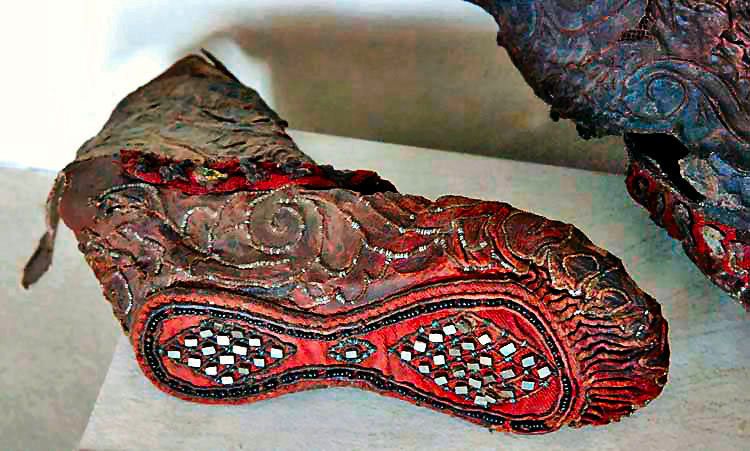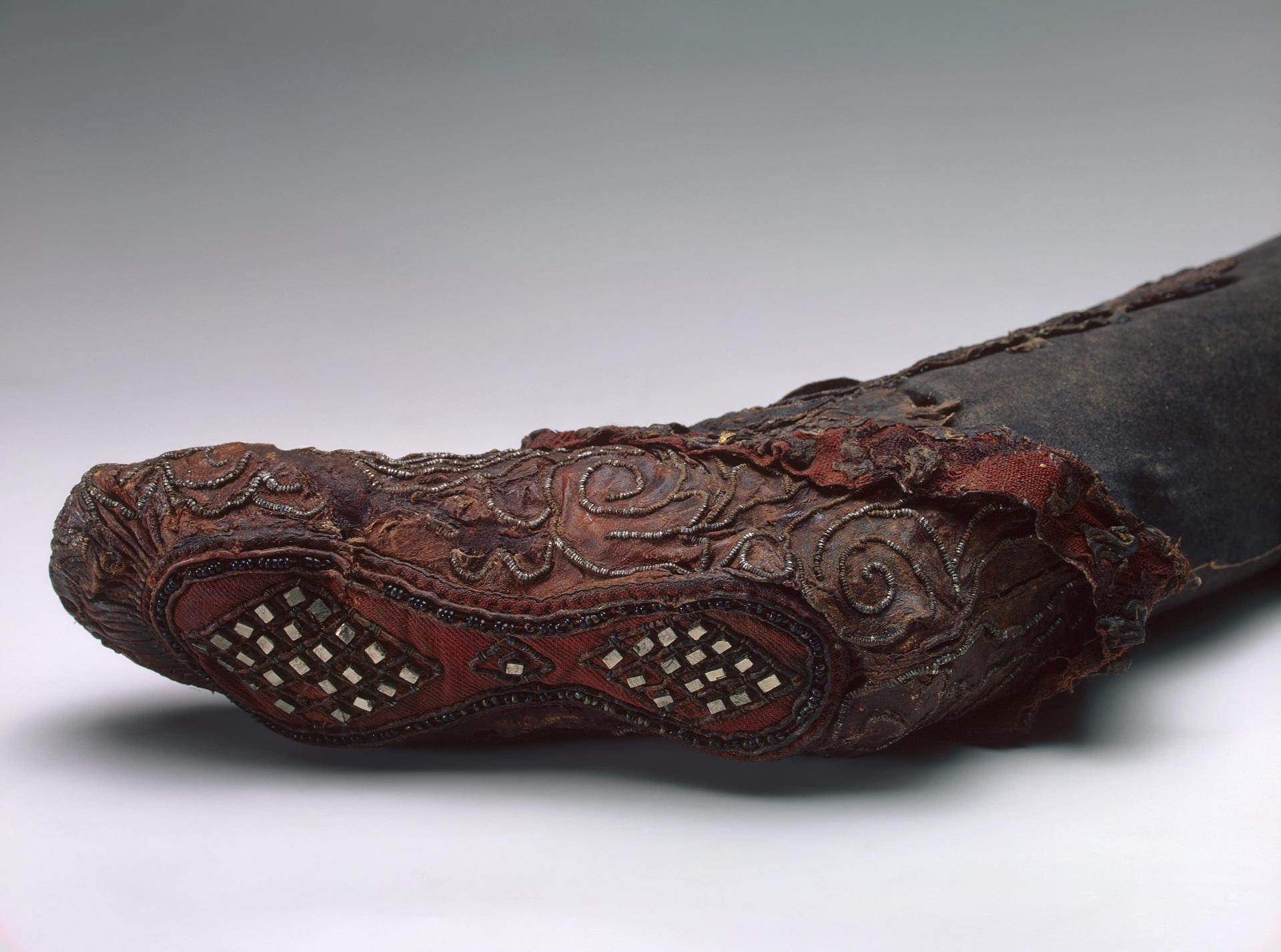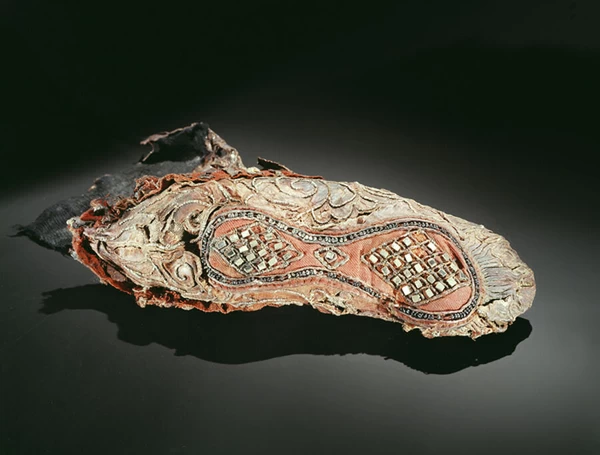In the remote Altai Mountains, a remarkable discovery has emerged from the frozen earth—a pair of 2,300-year-old boots. Perfectly preserved by the permafrost, these boots belong to a Scythian woman, offering an extraordinary glimpse into the life of a nomadic warrior from a tribe that once roamed the southern Siberian steppes. The Scythians, who lived between 900 and 200 B.C., left no written records of their own, so much of what we know about them comes from the accounts of Greek, Assyrian, and Persian historians. This discovery sheds new light on their way of life, adding layers of depth to our understanding of this enigmatic group of people.
The Scythians: Masters of Mobility and Warfare
The Scythians were known for their exceptional mobility, which made them formidable adversaries. Their nomadic lifestyle—living in portable homes and constantly on the move—was a strategic advantage in battle. The Greek historian Herodotus famously described the Scythians as nearly invincible: “None who attacks them can escape, and none can catch them if they desire not to be found. For when men have no established cities or fortresses, but all are house-bearers and mounted archers, living not by tilling the soil but by cattle-rearing and carrying their dwellings on wagons, how should these not be invincible and unapproachable?” Herodotus’s portrayal highlights the Scythians’ unparalleled ability to evade and outmaneuver their enemies, thanks to their nomadic culture and expert archery skills.

This mobility was not just about survival—it was also central to their military strategies. By not being tied to fixed locations, they were able to strike swiftly and then disappear before the enemy could react, making them a nightmare for those who sought to conquer them.
Cultural Practices: The Scythian Rituals and Customs
Beyond their military prowess, the Scythians had a distinct and fascinating culture, full of rituals and practices that set them apart from other ancient societies. One of the most intriguing aspects of Scythian life, as described by Herodotus, was their use of hemp in a unique vapor bath ritual. The historian recounts: “They anoint and wash their heads; as for their bodies, they set up three poles leaning together to a point and cover these over with woollen mats… The Scythians then take the seed of this hemp and, creeping under the mats, they throw it on the red-hot stones; and, being so thrown, it smoulders and sends forth so much steam that no Greek vapour-bath could surpass it. The Scythians howl in their joy at the vapour-bath. This serves them instead of bathing, for they never wash their bodies with water.”

This vaporous ritual, which combined the effects of steam and hemp, allowed the Scythians to cleanse their bodies and minds without the need for water—a valuable resource in the harsh steppe environment. It also served as a form of social bonding and spiritual purification, reflecting the Scythians’ deep connection to their land and their unconventional approach to daily life.
Women Warriors: The Scythian Matriarchs
Perhaps one of the most surprising aspects of Scythian society is the prominent role that women played in their military and warrior culture. Contrary to the typical gender roles of many ancient societies, Scythian women were active participants in warfare. Archaeological evidence suggests that nearly a third of Scythian women were buried with weapons such as bows and arrows, indicating that they fought alongside men in battle. These women were not simply passive figures but were trained warriors, engaging in the same hunting and combat practices as their male counterparts.

The existence of female warriors in Scythian society is thought to have inspired the Greek myths of the Amazons—fierce, independent women warriors who lived apart from men. The Scythian women, like their male counterparts, were expert horse riders and archers, skills that were essential for survival in the expansive, unforgiving Eurasian steppe. Their presence on the battlefield challenged the traditional gender norms of the ancient world, showcasing a more egalitarian approach to warfare and society.
The Significance of the Scythian Boots
The discovery of these ancient boots adds a physical layer to our understanding of Scythian life. Preserved in the frozen ground of the Altai Mountains, these boots offer valuable insights into the craftsmanship, clothing, and daily life of a nomadic Scythian woman. The boots, made from materials suited to the harsh steppe environment, tell the story of a warrior who navigated both the physical and social landscapes of the Eurasian steppe with resilience and adaptability.

More than just an archaeological find, these boots symbolize the enduring legacy of the Scythian people. They are a testament to the toughness, ingenuity, and resourcefulness of a culture that survived and thrived in one of the most challenging environments on Earth. From their mobile, warlike society to their profound rituals and warrior women, the Scythians continue to fascinate historians and archaeologists, offering a glimpse into a world where men and women fought side by side in the ancient steppes of Eurasia.
Conclusion: The Enduring Legacy of the Scythians
The Scythians may no longer roam the steppes, but their legacy endures through discoveries like the 2,300-year-old boots. These findings allow us to better understand a complex, independent society that valued mobility, warfare, and egalitarian principles. The Scythians were far more than just warriors—they were a dynamic culture that defied the expectations of their time, especially in regard to the role of women. As we continue to study their artifacts and explore their history, the Scythians remain an indelible part of the ancient world, their story ever-fascinating and inspiring for generations to come.

